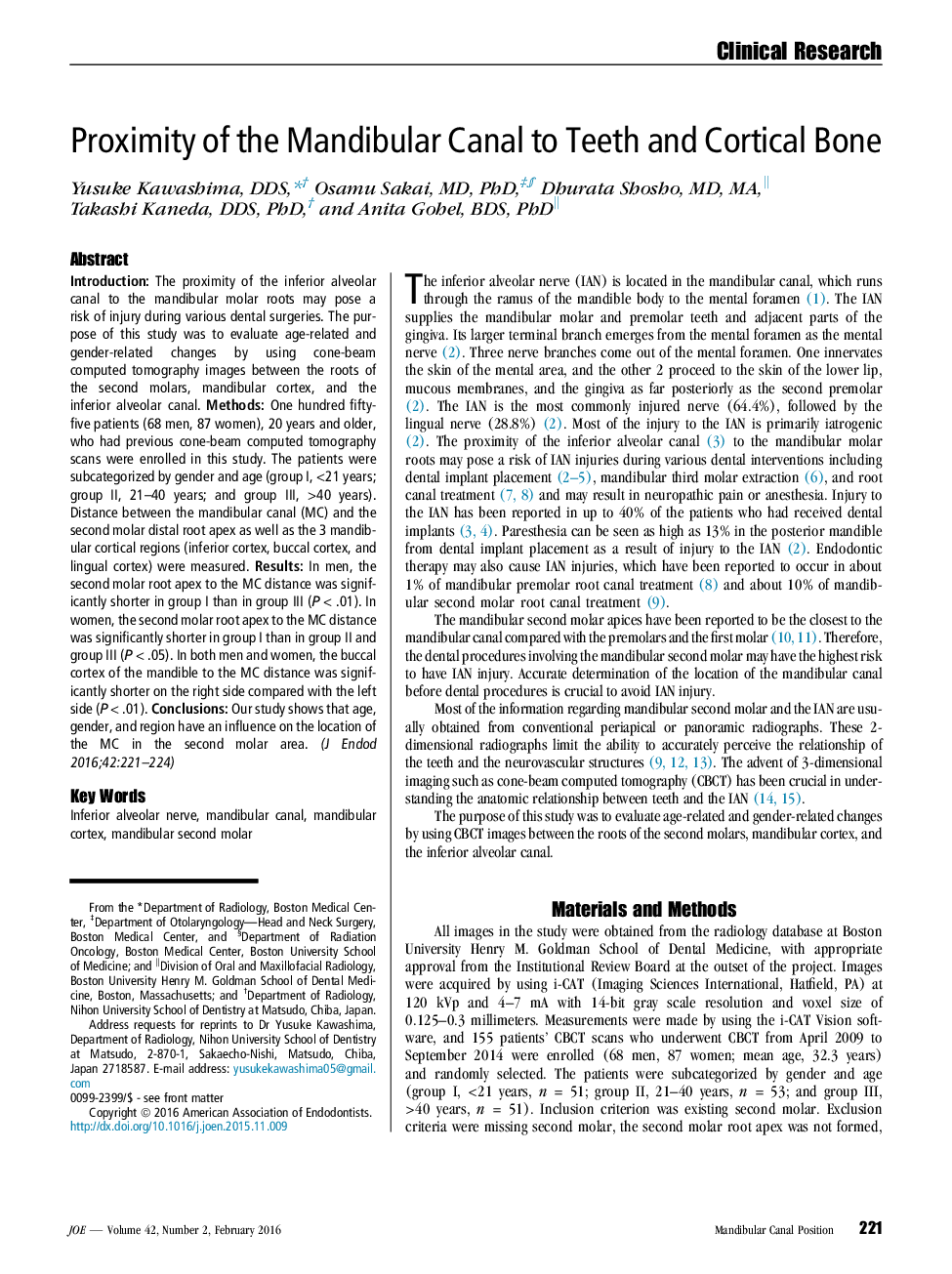| Article ID | Journal | Published Year | Pages | File Type |
|---|---|---|---|---|
| 3150040 | Journal of Endodontics | 2016 | 4 Pages |
IntroductionThe proximity of the inferior alveolar canal to the mandibular molar roots may pose a risk of injury during various dental surgeries. The purpose of this study was to evaluate age-related and gender-related changes by using cone-beam computed tomography images between the roots of the second molars, mandibular cortex, and the inferior alveolar canal.MethodsOne hundred fifty-five patients (68 men, 87 women), 20 years and older, who had previous cone-beam computed tomography scans were enrolled in this study. The patients were subcategorized by gender and age (group I, <21 years; group II, 21–40 years; and group III, >40 years). Distance between the mandibular canal (MC) and the second molar distal root apex as well as the 3 mandibular cortical regions (inferior cortex, buccal cortex, and lingual cortex) were measured.ResultsIn men, the second molar root apex to the MC distance was significantly shorter in group I than in group III (P < .01). In women, the second molar root apex to the MC distance was significantly shorter in group I than in group II and group III (P < .05). In both men and women, the buccal cortex of the mandible to the MC distance was significantly shorter on the right side compared with the left side (P < .01).ConclusionsOur study shows that age, gender, and region have an influence on the location of the MC in the second molar area.
